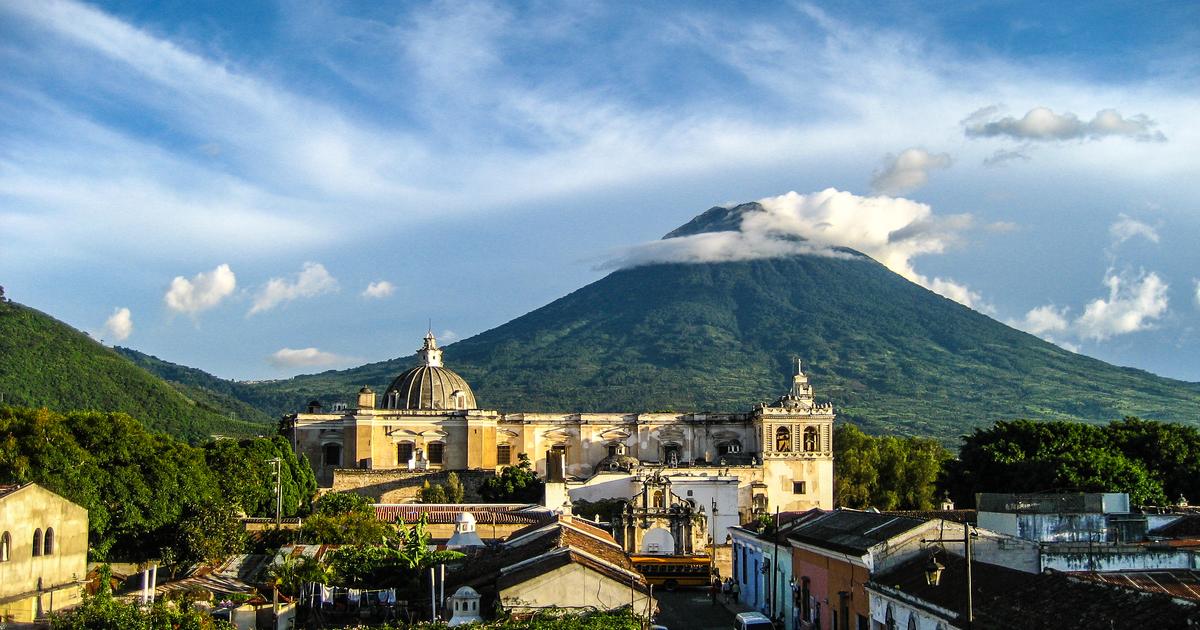Guatemala enjoys a tropical climate characterized by mild temperatures all year round, but which can vary depending on altitude.
The country experiences a dry season, from November to April, and a wet season, from May to October, with peak rainfall in September and October.
The cities of Guatemala City, Antigua, Chichicastenango and Lake Atitlan have a more temperate climate than the mountainous areas, where the mercury tends to drop.
Read alsoTravel insurance: Covid-19, Visa and MasterCard cards… The answers to your main questions
When is the best time to go to Tikal and northern Guatemala?
Temples, palaces, murals... Tikal is one of the most important archaeological complexes left by the Mayas.
Matyas Rehak
Located in the heart of the humid subtropical forest of Petén, ideal for hiking between November and April, the Mayan site of Tikal impresses with its majestic temples and its pyramids with steep staircases.
Tikal was at its peak around AD 750 and has dozens of temples erected to commemorate the sun deity.
That of the jaguar is the best preserved while the temple of the two-headed serpent, whose height exceeds 70m, is the largest.
Be sure to take a detour to Uaxactun;
Rio Azul;
El Mirador, known for its 18-story Tiger Pyramid; and Flores, a small island in the middle of Peten Itza, the second largest lake in the country, where temperatures fluctuate between 28°C and 33°C during the dry season.
Read alsoThree essential tips for preparing for your first hike
When is the best time to go to the southwest of Guatemala?
Aboard a small boat, you can discover the authentic villages bordering Lake Atitlan.
robert
Ciudad de Guatemala, the capital, is one of the largest urban agglomerations in Central America.
The center of the city is the Plaza Mayor, particularly crowded on Sundays with storytellers, vendors and hairdressers between the cathedral, the large fountains and the Palacio Nacional, best visited during the dry season, when the thermometer reads between 23°C and 28°C.
Among the many museums to discover, the Museo de Arquelogia y Etnologia houses the oldest jade jewelry and Mayan ceramics in the country.
Located in the Panchoy Valley, 45 km west of the capital and under the gaze of volcanoes, Antigua is the colonial jewel of Guatemala.
Listed as a UNESCO World Heritage Site, it was founded in the 16th century and was the capital from 1543 to 1773.
Among its most beautiful buildings is the convent of La Merced, whose façade hides a cloister with a star-shaped fountain.
The cobbled streets of the old town are lined with colorful buildings, shops selling tropical fruits, spices, cocoa and coffee, ceramics and jewelry made of jade, the sacred stone of the Mayans.
Lake Atitlán, a crater basin surrounded by the San Pedro, Tolimán and Atitlán volcanoes, is in the southern province of Sololá.
To explore it, join Panajachel and board small boats that will take you to villages with authentic charm, such as San Juan La Laguna, nicknamed the
village of artists
because of its colorful murals evoking the Mayan cosmogony .
Chichicastenango is famous for its colorful market, one of the largest in Central America, which is held on Thursdays and Sundays.
Read alsoAntigua, our essentials in the pearl of Guatemala
When is the best time to go to southeastern Guatemala?
Livingston, a charming village bordering the Gulf of Honduras.
Photos 593
If the south-east of the country is famous for its hikes, in particular that of Finca Paraiso, which leads to a hot spring and a waterfall, it also offers the possibility of visiting the archaeological site of Quirigua which contains the largest Mayan stelae discovered to date.
Nine stelae are arranged around a central square, accompanied by altars sculpted in zoomorphic forms.
From there, it is possible to reach Rio Dulce and board a boat that will take you to Livingston, a charming village bordering the Gulf of Honduras where you can swim in water at 29°C the Caribbean Sea all year round.

